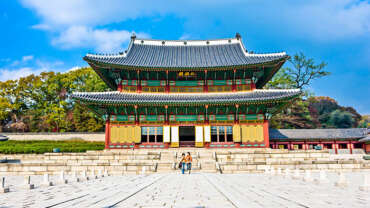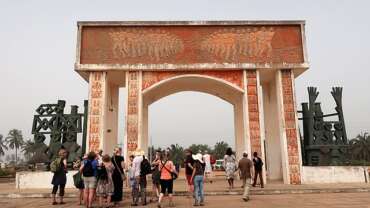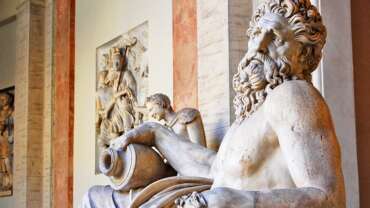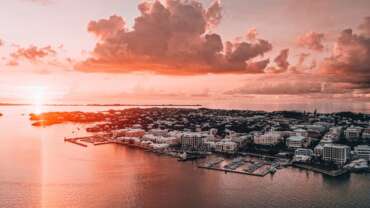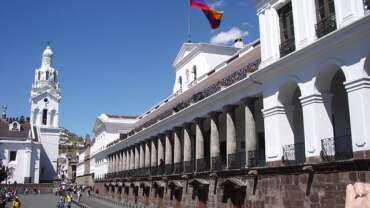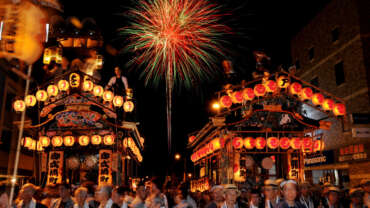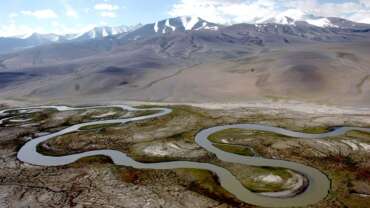Belgium - The Place to be
Belgium, a country in Western Europe, is known for medieval towns, Renaissance architecture and as headquarters of the European Union and NATO. The country has distinctive regions including Dutch-speaking Flanders to the north, French-speaking Wallonia to the south and a German-speaking community to the east. The bilingual capital, Brussels, has ornate guildhalls at Grand-Place and elegant art-nouveau buildings.
Travel Themes in Belgium
Arts & heritage
Flanders has a deep and rich cultural heritage that goes back hundreds of years. The region has a multitude of world-class museums, galleries and art centres and a wealth of art events throughout the year. With artists including Jan van Eyck and James Ensor, as well as sculptors and photographers, art lovers will find plenty to immerse themselves in on a trip to Flanders.
Belgian design
An appetite for design? Discover the flourishing design scene in Flanders. Admire the creations of internationally renowned people such as Victor Horta and Henry Van de Velde. Visit interesting museums, fairs, exhibitions and shops in Antwerp, Ghent, Brussels and Kortrijk. You immediately notice that Flanders has a long and rich history in creativity.
Major international artists paved the way for a very wide palette of contemporary designers specialized in the most diverse disciplines including jewelry, ceramics, furniture and textile design. We have plenty of talent that creates exceptional work at an international level.
Belgian fashion
When it comes to fashion, Belgium has a rich history, but also a very lively contemporary fashion scene.
In terms of fashion, Antwerp has a unique story to tell. In fact it all began in 1663, when the Royal Academy of Fine Arts Antwerp was founded. The Academy soon developed into an internationally acclaimed institute for Fine Arts, Architecture and Design, visited by artists and designers such as Henry Van de Velde and Vincent van Gogh.
In 1963 the prestigious Fashion Department of the Academy opened its doors. The Fashion Department became world leading in the early eighties and “The Antwerp Six” were a hot issue in the media.
In the 21st century Antwerp still has a unique fashion story to tell. The city prides itself on workshops and stores of fashion talent. Add to this the trendy flagship stores and exclusive store concepts, and you pretty much get a complete picture of fashion in Antwerp. Thanks to all these different facets, Antwerp is considered an outstanding fashion and shopping city, with good reason. Explore and discover fashioninantwerp.
But there is more!
While the Antwerp style is often described as avant-garde and dark, Brussels style is well known for its romantic and playful fashion. Each year new talent graduates from the Brussels “La Cambre” fashion school. Ghent is a rising star on the fashion front. In Ghent you will spent a cozy time for shopping. It is specialized in vintage.
Comics
Belgian comics are a distinct subgroup in the comics history, and played a major role in the development of European comics, alongside France with whom they share a long common history.
While the comics in the two major language groups and regions of Belgium each have clearly distinct characteristics, they are constantly influencing one another, and meeting each other in Brussels and in the bilingual publication tradition of the major editors.
As one of the few arts where Belgium has had an international and enduring impact in the twentieth century, comics are known to be “an integral part of Belgian culture”.
Cycling in Flanders
Flanders is a paradise for cyclists. Are you ready to get on your bike and explore its beautiful sceneries, picturesque villages and artistic cities? You will find all the information you need in our leisure pages, from interesting routes and bike rental, to bicycle-friendly accommodations.
If you are a cycling-race enthusiast, a trip to Flanders is nothing less than a pilgrimage to the most hallowed grounds in the sport. Read on and find out more about cycling events, musea, routes to explore, inspiring stories, and more.
Flanders wants to be an enjoyable cycling destination for everyone: tourists of all ages, with or without disabilities or care needs, etc. Therefore, we are happy to help you if you have additional needs or questions when planning a trip to Flanders.
Flanders Fields
From 1914 to 1918, Flanders Fields was a major battle theatre on the Western Front during the First World War. A million soldiers from more than 50 different countries were wounded, missing or killed in action here. Entire cities and villages were destroyed, their population scattered across Europe and beyond. The destruction of the city of Ypres and the brutal conditions endured during the Battle of Passchendaele (Third Battle of Ypres) became worldwide symbols for the senselessness of war. Today, the peaceful region still bears witness to this history through its monuments, museums, cemeteries and the countless individual stories that link it with the world.
In Flanders Fields
Remembrance of the First World War will always live on in Flanders. In places such as the Menin Gate, where the Last Post sounds every evening, Tyne Cot Memorial and Cemetery (the largest Commonwealth military cemetery in the world) and the many, many memorials dedicated to the fallen and the missing. Also, the poem, ‘In Flanders Fields’, by John McCrae, went on to inspire the use of the poppy, which once grew on the battlefields of Flanders Fields, to become an enduring symbol of remembrance across the world.
Learn the stories, experience the places and discover the history of Flanders Fields.
Flanders is a festival
Flanders is the ultimate place to experience a festival atmosphere during summer. Whether you’re looking to rock out with your favourite band, chill out to some relaxing jazz or party all night with top international dance DJ’s, with more than 280 festivals and 10,000² miles of festival ground across Flanders you’re certain to find something that suits you.
Set against a backdrop of lively cities like Brussels and Antwerp or located among the medieval marvels of Bruges and Ghent, you’ll have an experience you’ll never forget. For festival fun that will make your summer, look no further.
From Flanders with food
Love of food and flavour is in a Fleming’s blood, and good taste is rooted in our DNA. We are living the good life. We have fries, beer and chocolate, but there is so much more to discover. Small-scale microbreweries are emerging, young chefs are innovating in the kitchen with zero waste, experimenting with local ingredients. Chocolatiers are redefining the classic praline, and street food is taking over our streets. Expertise and know-how are passed down from parent to child. A creative young generation is breathing new life into our traditions. That’s what keeps our culinary heritage alive.
Discover Flemish cuisine
With its 94 Michelin-starred restaurants, Flanders has one of the world’s highest densities of top-class eateries. So, anyone who want to eat at the highest level in Flanders will have no difficulty. However, Flanders has a great offer for everyone’s budget. Take a look in the Bistronomie guide for a collection of the best no-nonsense restaurants in Belgium. Or find all restaurants by city on Resto.be.
We offer you Flemish craftsmanship, a delight at any table.
That’s why real Foodies come to Flanders!
Handmade in Flanders
Flanders has a rich history in arts and crafts. Throughout the century it has never lost its authentic way of working. Nowadays, we can still experience the traditions from the past…with a contemporary touch.
The trade of tapestry making began in Flanders in the 13th century. Thanks to their high quality and extended use of colour, Flemish tapestries soon rose in popularity throughout Europe. Up until now, they are an integral part of our cultural heritage.
Sophisticated craftsmanship and elegant fashion meet each other in the world of lace. With many contemporary designers still making gorgeous creations today, it is definitely a story worth discovering.
Looking for something more luxurious? Immerse yourself in the brilliant world of diamonds in Flanders.
Red Star Line
The Red Star Line was a legendary shipping company, which carried 2.6 million passengers – mostly from Central and Eastern Europe – from Antwerp to New York and Philadelphia. The company was founded in Philadelphia in 1871, as a joint venture between Americans and Belgians.
In September 2013, the Red Star Line Museum opened in the historic warehouses of the Red Star Line shipping company in Antwerp. Visitors to the museum can embark on a moving journey, retracing the footsteps of emigrants such as Irving Berlin, Albert Einstein and Golda Meir.
Regions of Belgium
Flanders Fields
Flanders commemorates the Great War
In 1914, the German army marched through Belgium en route to France, the start of a war that would affect many nations. The majority of the country was occupied. Only the ‘Westhoek’ part of Flanders remained free from occupation, and was part of the Western Front. For 4 years, the region was the site of a hopeless trench war, with countless victims. ‘A lost generation’.
Now, a century later, the Great War is being commemorated throughout the world. In Flanders, numerous museums, exhibitions and events offer you the opportunity to engage with the history of the war, understand how nations got involved and refl ect on the impact of the First World War for us today, and the message of peace and remembrance for the future.
The Flemish Coast
Discover the beautiful and scenic Flemish coast
The coast’s 42 miles long stretch of sandy coastline has 13 resorts, each with its own character and unique atmosphere. The sandy beaches are ideal for children. The beaches shelve gently out to sea, and life guards ensure everyone’s safety. Sunbathers have found that they acquire a healthier tan here than in southern Europe, thanks to the iodine and salt in the air.
The Flemish coast offers a wide range of sport and recreation facilities : here you can hire a bicycle or a buggy, or go sailing or fishing. The wide beach is ideal for ball games, horse riding and beach surfing. And there is more: take a stroll along the beach promenades, great shopping in fancy stores that are also open on Sunday and great food and local specialties are offered in a wide variety of restaurants.
The resorts are well connected by public transport: de “Kusttram” drives all the way from Knokke to De Panne. A cheap, easy and pleasant way to explore the Flemish coast. Close by, there is Bruges, one of Belgium’s finest cities of art. A visit to this historic city is a must.
The summer months are the busiest period for the coast. However, other seasons have their own charm, even if sunbathing is not part of it.
Art Cities in Belgium
Antwerp
Antwerp, Stylish to a Fault
Whether you’re in the central train station or MAS, the remarkable town museum, it’s impossible not to find the architecture attractive. It ranges from medieval buildings like the impressive town hall and square, to the contemporary courthouse, to numerous Art Nouveau gems in between. From stylish buildings to well dressed window displays, Antwerp is a good-looking city.
This isn’t a new accolade either as it was one of the greatest, richest cities in all of Europe in the 1500’s. A century later, the iconic Flemish Baroque painter Peter Paul Rubens called Antwerp his home, along with Anthony Van Dyck. In more recent years, canvas has been replaced by cotton and the artists of note are fashion designers. This city is home to world-renowned shopping, the famous Antwerp Six and a bustling diamond trade.
Bruges
Bruges, Picture Perfect
When one imagines Belgium, they often are thinking of Bruges. Canals loop across the town like a string of pearls, creating the well-earned moniker of ‘the Venice of the North’. With cobblestone paths, brick archways, stone churches and quaint bridges, it’s nearly impossible to take a bad photograph. The addition of swans on the water, horse drawn carriages in the lanes and daffodils in the park make it nearly magical.
Listed on UNESCO World Heritage Sites, Bruges has the best-preserved example of a medieval city centre, with its bell tower leaving over the wide open market. With the centre closed off to cars, all the stunning beauty and culture of this unforgettable city can be easily explored on foot, although a boat ride along the quiet canals is something not to be missed.
While a small city, to truly uncover the many pleasures around each corner, from lace boutiques and chocolates shops to architectural and historical treasures, give yourself plenty of time to get happily lost.
Ghent
Ghent, Europe’s Best Kept Secret
The undiscovered Flemish jewel of a city boasts an opera house, a handful of museums, even more ancient churches, and countless bridges spanning the two rivers that wind themselves through the city. The true joy of the town is to be found whiling away an afternoon in an outdoor café. Whether your wrapped under blankets sipping a coffee in the winter or sunning yourself in the springtime with a cold Belgium brew, you will fit in with the locals if you simply enjoy the great atmosphere this town offers. If possible, find a seat on the Graslei, a scenic canal spot in the centre of town, with a great view on the many bridges, grand houses and medieval buildings.
Alternatively, hop on a bike and explore the nearby Patershol district with a small labyrinth of charming cobblestone streets, the towering Gravensteen Castle and Unesco recognised bell tower. The laid back atmosphere of this liveable, lovable city means enjoying the vibrant nightlight of a university town then quaffing cava at the flower market the following Sunday morning.
Leuven
Leuven, Mecca of Books and Beer
A vibrant student population and a rich history combine in the city of Leuven, home to one of Europe’s oldest universities (KU Leuven), founded in 1425. The university, one of the most important in Europe, has its roots in the centre of Leuven, and its historic college buildings dominate many of the squares and streets. A few lucky students even have the distinct privilege of living in the 13th century stone beguinage, a UNESCO world heritage site worthy of a visit. 28,000 students and professors lend a distinctly youthful atmosphere to the city. Or perhaps it’s the beer!
Leuven is Belgium’s reigning brewing capital – no small feat in a country that produces hundreds of delicious varieties. Leuven is the headquarters of Inbev, the second largest brewery in the world, famous for Stella Artois beers. Centuries of Flemish tradition and craftsmanship lie behind Leuven’s premium brews. Leuven is a great place for the curious traveller with time to explore. It is an intimate city; any spot can be easily reached on foot or by bicycle.
Mechelen
Mechelen, Beers, Bells and Tapestries
Mechelen is a small and picturesque city that is big on charm and history, thriving with quaint shops, car-free areas and pleasant little squares. The grace of centuries-old palaces and majestic churches appeals to everyone. There are no less than 336 listed buildings and monuments, including eight gothic and baroque churches from the 14th-17th century. The Begijnhofkerk is especially unique, with its feminine art schemes and pastel colours.
Mechelen is a city for all ages. Young people can actively enjoy themselves in the Toy Museum or the Tivoli Children’s Farm, whereas the young at heart can entertain themselves at the Anker, one of the oldest operating breweries in Belgium. Students from all over the world come to learn to play church bells at Mechelen’s carillon school. Sitting outside on the terrace of a cafe sipping a local beer while listening to the bell music coming from the sky is nothing short of delightful. It is also home to one of the last remaining places in the world that restores and repairs antique tapestries, at Royal Manufacturers De Wit.
Brussels - The Capital
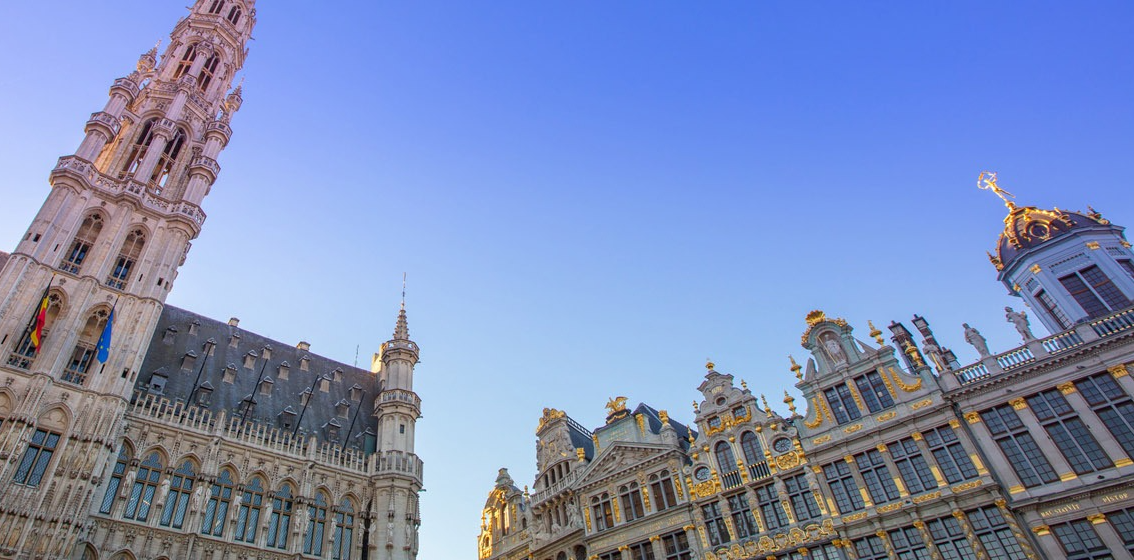
Brussels, the heart of Europe
As the headquarters to the European Union and NATO, this metropolis is often referred to as The Capital of Europe. While certainly international, it offers more than governmental buildings to uphold this well earned title. It is the ultimate European city with a mosaic of languages and cultures paving a way for a vibrant restaurant and nightlife scene. With over 80 museums, the King’s Palace and a wealth of history, culture is equally accessible.
Impossible to miss is the Grand Place, which was built as a merchants’ market in the 13th century. Smack in the city centre, it plays host to numerous festivals and concerts year round and is also where you can discover the tiny Manneken-Pis, the somewhat peculiar symbol of the city. Towering over surrounding buildings, it can serve as a compass during your exploration of the city; be sure to indulge in chocolate at the Sablon.




